Wired Performance - E2400
We begin our benchmarks with a simple measure of throughput capability on two PC Specialist laptops. The first is powered by an Intel Core i5-6600 processor, 16GB of DDR4 memory, Nvidia GeForce GTX 970M graphics, a 120GB Kingston SSD and both a Killer E2400 NIC and a Killer Wireless-AC 1535 adapter.
The second laptop, for comparison purposes, contains an Intel Core i7-6700HQ processor, 16GB of DDR4 memory, Nvidia GeForce GTX 970M graphics, a 240GB Kingston SSD and network capabilities courtesy of a Realtek PCIe GBE Family NIC and an Intel Dual Band Wireless-AC 8260 adapter.
To gauge performance, we use Netperf to measure throughput between the laptops and a desktop client, all of which are wired to a Linksys EA8500 Max-Stream AC2600 router via a TP-Link TL-SG1024 Gigabit switch.
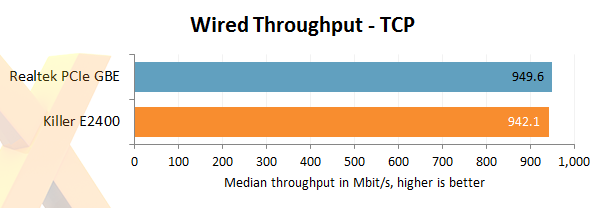
Starting with the commonly-used TCP protocol, we see little variation between the two controllers, both of which are effectively saturating the Gigabit Ethernet connection.
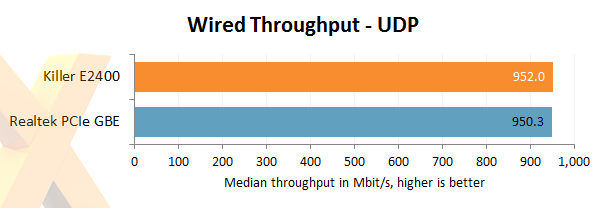
Switching to the UDP protocol, most commonly associated with streaming multimedia, reveals no surprises. It's Gigabit Ethernet as you know it - plug in a wire and it's fast, efficient and reliable.
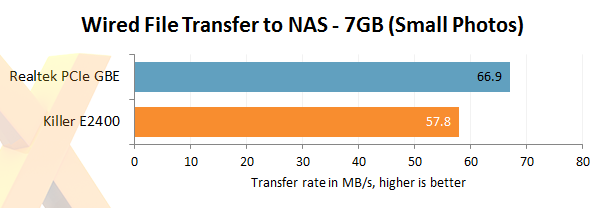
Real-world usage is more likely to reveal variations in performance. Our first file-transfer test entails copying a 7GB folder of photos from the laptop to a Synology NAS. In this scenario, the Realtek controller has an advantage, though we suspect part of the performance gap can be attributed to hardware variations - the Realtek-based laptop, remember, has the faster Core i7 CPU and a quicker SSD.
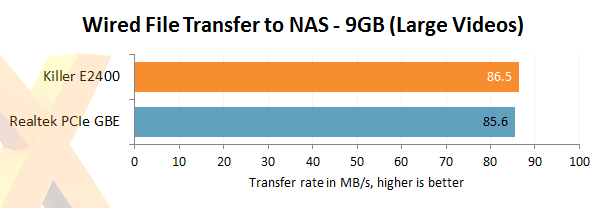
Repeating the file transfer, only this time with a folder containing two large, 4K videos, restores parity, with both controllers delivering practically identical performance.
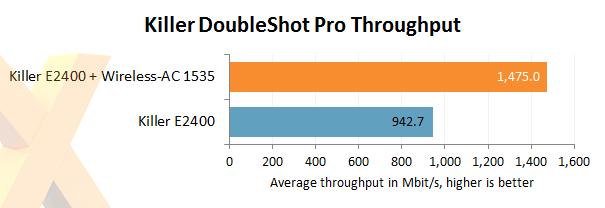
In terms of raw throughput, the Killer E2400 is inevitably going to deliver speeds on par with rival solutions. DoubleShot Pro can, of course, provide an extra injection of bandwidth.
The above example has the Killer laptop connected to a server in two modes, firstly with just the Killer E2400 and secondly with the Killer E2400 and Wireless-AC 1535 combined in DoubleShot Pro mode. The latter increases total throughput by 56 per cent, but real-world benefits for the everyday user remain unclear - DoubleShot Pro would make most sense in an environment where two broadband connections are available.









